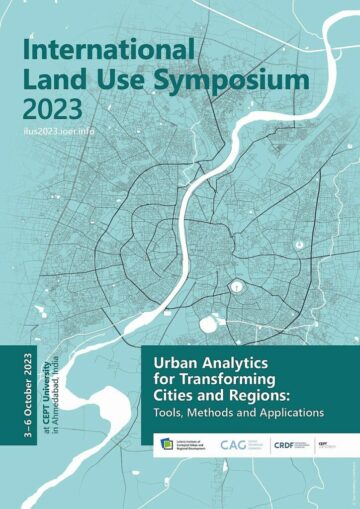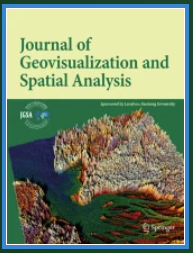
Climate change and atmospheric dynamics unveil future weather extremes
From late June to mid-July of 2021, the Pacific Northwest was scorched under an unprecedented heat dome, shattering temperature records and igniting a wave of concern over climate extremes. As cities like Portland and Seattle, known for their mild summers, grappled with triple-digit heat, scientists delved into the whys and hows of this meteorological anomaly.
1 billion people left dangerously exposed to heat stress by gaps in climate monitoring
Our new research shows poor weather station coverage across the tropics leads to underestimates of heat stress in cities. Concentrated across tropical Asia and Africa, informal settlements, commonly known as “slums”, are on the front line of climate exposure. The shortfalls in climate monitoring leave these communities dangerously vulnerable to rising humid heat. With few options to adapt, millions could be forced to seek refuge away from the hottest parts of the tropics.
After the earthquakes: Experts discuss building codes in Türkiye and the U.S.
On Feb. 6, 2023, two major earthquakes, with magnitudes of 7.8 and 7.5, occurred nine hours apart in the southern region of Türkiye. We sat down with two experts, Mustafa Erdik, Professor of Civil Engineering, and Evan Reis, Executive Director and co-founder of the U.S. Resiliency Council, to explore lessons that architects, engineers and policymakers in Türkiye and the U.S. may learn from this catastrophe.
Uncounted costs – Data gaps hide the true human impacts of disasters in 2023
Munich Re – the world’s largest reinsurer – has released its global disaster loss calculation for 2023, coming in at a total of US $250 billion. This roughly equals the entire GDP of New Zealand or Portugal. It is also slightly lower than the previous estimate for 2022, which originally came in at US $270 billion.
Alpine glaciers will lose at least a third of their volume by 2050,
whatever happens
By 2050, we will have lost at least 34% of the volume of ice in the European Alps, even if global warming were stopped. This is the prediction of a new computer model developed by scientists from the Faculty of Geosciences and Environment at the University of Lausanne (UNIL), in collaboration with the University of Zürich, ETHZ and the University of Grenoble. In this scenario, developed using machine-learning algorithms and climate data, warming is stopped in 2022, but glaciers continue to suffer losses due to inertia in the climate system.
Community-led disaster management: Soulinh’s path to resilience
Having recognized that locust infestations, droughts, and animal epidemics posed significant threats to their livelihoods, the Soulinh villagers identified proactive measures, including preparedness and response activities, in the village disaster risk management plan to cope with the potential impact.
Read the full newsletter here
- SEO Powered Content & PR Distribution. Get Amplified Today.
- PlatoData.Network Vertical Generative Ai. Empower Yourself. Access Here.
- PlatoAiStream. Web3 Intelligence. Knowledge Amplified. Access Here.
- PlatoESG. Carbon, CleanTech, Energy, Environment, Solar, Waste Management. Access Here.
- PlatoHealth. Biotech and Clinical Trials Intelligence. Access Here.
- Source: https://codata.org/disaster-risk-reduction-and-open-data-newsletter-february-2024-edition/
- :has
- :is
- 2021
- 2022
- 2023
- 2024
- 2050
- 7
- 8
- a
- across
- activities
- adapt
- africa
- algorithms
- Alps
- also
- an
- and
- animal
- apart
- architects
- ARE
- AS
- asia
- At
- atmospheric
- away
- BE
- Billion
- Building
- but
- by
- calculation
- came
- change
- Cities
- civil
- Climate
- Co-founder
- CODATA
- Codes
- collaboration
- coming
- committee
- commonly
- Communities
- computer
- Concentrated
- Concern
- continue
- Costs
- could
- Council
- coverage
- data
- developed
- Director
- disaster
- disasters
- discuss
- down
- due
- dynamics
- edition
- Engineering
- Engineers
- Entire
- Environment
- Epidemics
- Equals
- estimate
- European
- evan
- Even
- executive
- Executive Director
- experts
- explore
- exposed
- Exposure
- extremes
- Feb
- February
- few
- For
- forced
- from
- front
- full
- future
- gaps
- GDP
- Global
- global warming
- Have
- Hide
- hottest
- HOURS
- HTTPS
- human
- humid
- ICE
- identified
- if
- igniting
- Impact
- Impacts
- in
- Including
- inertia
- informal
- into
- IT
- ITS
- june
- known
- largest
- Late
- Leads
- LEARN
- least
- Leave
- left
- Lessons
- like
- Line
- livelihoods
- lose
- loss
- losses
- lost
- lower
- major
- management
- May..
- measures
- mild
- millions
- model
- monitoring
- New
- New Zealand
- Newsletter
- nine
- occurred
- of
- on
- open
- open data
- Options
- or
- originally
- over
- Pacific
- parts
- path
- People
- plan
- plato
- Plato Data Intelligence
- PlatoData
- policymakers
- poor
- Portland
- Portugal
- posed
- potential
- prediction
- previous
- Proactive
- Professor
- RE
- recognized
- records
- reduction
- region
- released
- response
- rising
- Risk
- risk management
- roughly
- s
- scenario
- Science
- Science and Technology
- scientists
- Seattle
- Seek
- Settlements
- Shows
- significant
- Southern
- station
- stopped
- stress
- suffer
- system
- Technology
- than
- that
- The
- their
- These
- Third
- this
- threats
- to
- Total
- true
- Türkiye
- two
- u.s.
- under
- university
- unprecedented
- unveil
- us
- using
- Village
- volume
- Vulnerable
- was
- Wave
- we
- Weather
- were
- which
- will
- with
- world’s
- Zealand
- zephyrnet











